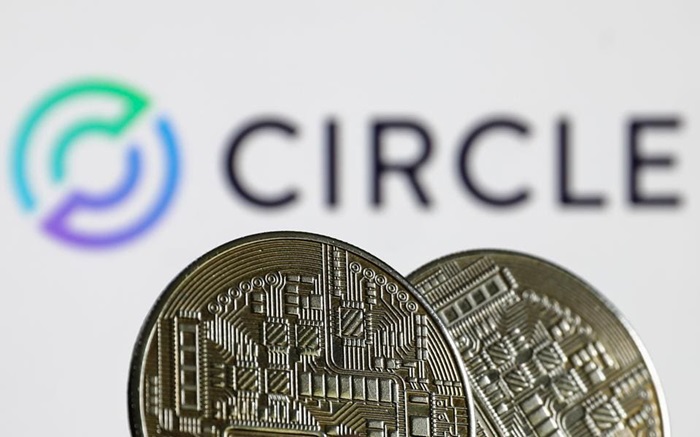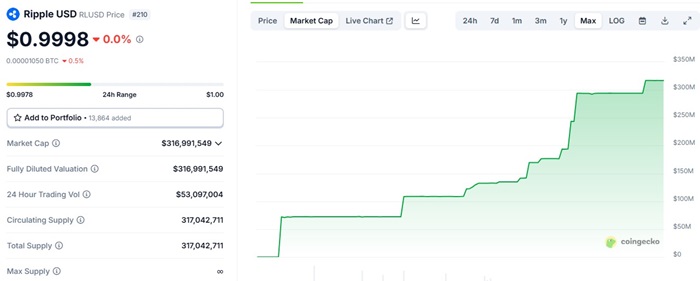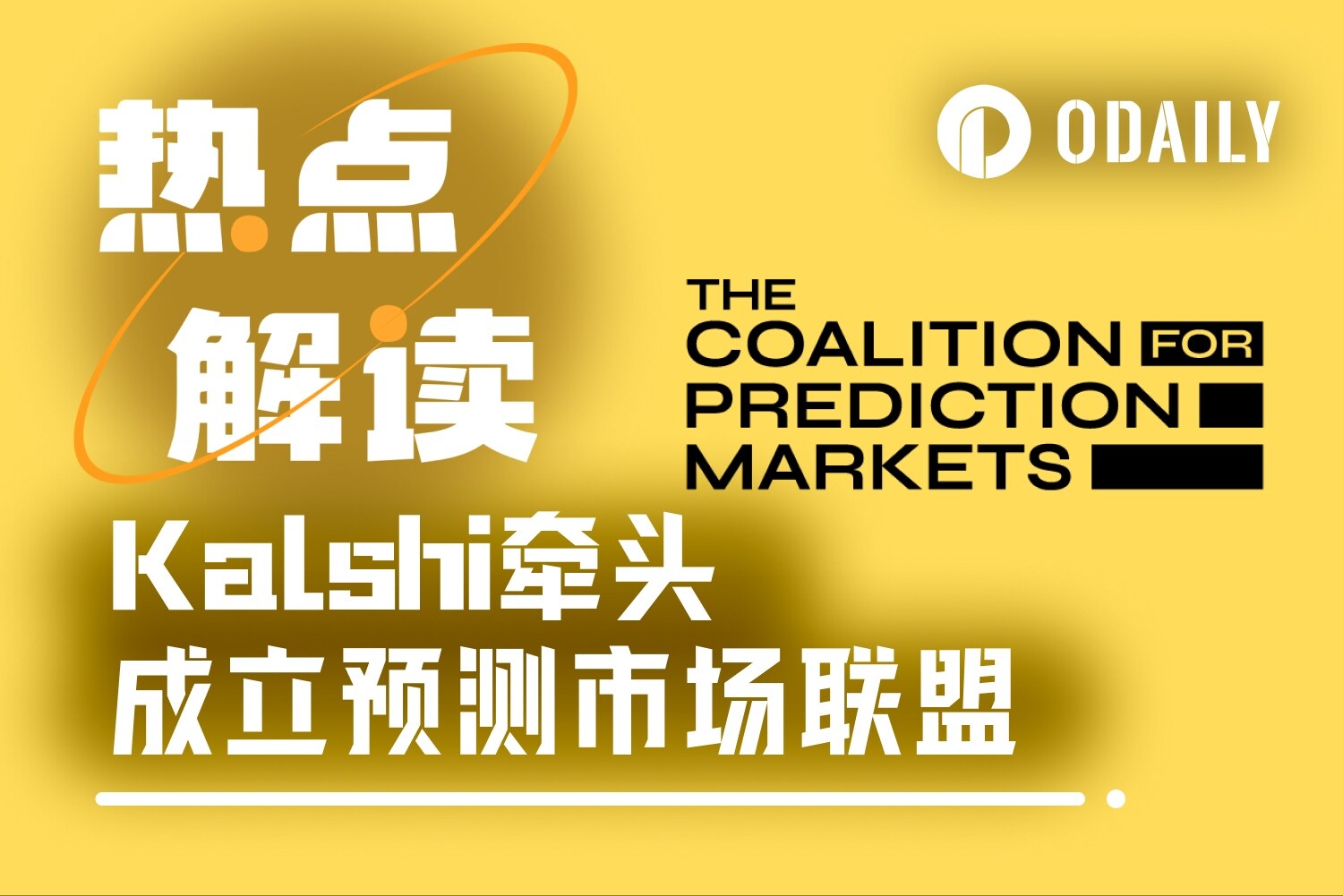Inside Ripple's $5 billion bid for Circle: An unexpected power play
Original article from Forbes
Compiled by Odaily Planet Daily Moni

Editor's note: There is a big news in the stablecoin market - Ripple has made a $4-5 billion acquisition offer to Circle Internet Group, a competitor and stablecoin provider that is promoting an IPO! Yes, you heard it right. It is Ripple, which just made the US Securities and Exchange Commission give up its appeal and admit that XRP is not a security, but this offer was rejected as too low. It is said that Ripple is still very interested in Circle, but has not yet decided whether to make another offer.
Why would Rippl, a well-known crypto company in the industry, make a business decision to acquire Circle at this point in time? Will Circle finally say "Yes" or "No"? In response to these questions, Forbes published an article to dig deep and analyze some "inside stories". Odaily Planet Daily compiled the original article as follows, enjoy~
Why is Ripple acquiring a stablecoin company?
Stablecoins require both scale and speed.
The news that Ripple is acquiring the stablecoin company Circle may not sound like a typical acquisition deal at first glance, but for industry insiders familiar with Ripple's corporate strategy, the acquisition of Circle is actually "both unexpected and reasonable."
In early April, Ripple acquired brokerage firm Hidden Road for $1.25 billion and announced that it would use the RLUSD stablecoin as collateral for its main brokerage products, moving its post-trading activities to the XRP Ledger blockchain. Ripple believes that this acquisition has the potential to optimize the cost and liquidity of its cross-border payment service Ripple Payments and provide custody services to Hidden Road's customers.
It is worth mentioning that Hidden Road has successfully obtained a securities dealer license, which means that the acquisition transaction has given Ripple the legal right to access traditional financial tracks as an institution. XRP and RLUSD may evolve into liquidity bridge assets under institutional transaction execution, repurchase financing and even sovereign debt swaps, opening the door to tokenized treasury bonds, central bank digital currencies and RWAs.
Obviously, Ripple's "ambition" has gone beyond the encryption track, and its power tentacles have begun to be more deeply embedded in the traditional financial infrastructure. Stablecoins anchored to fiat currencies are undoubtedly the best bridge to connect the encryption and traditional financial worlds.
In fact, as early as mid-2024, Ripple CEO Brad Garlinghouse determined the stablecoin strategy and announced the launch of the stablecoin RLUSD at the XRP Ledger Community Summit. After obtaining approval from the New York Department of Financial Services (NYDFS), RLUSD was officially launched at the end of last year. Its current market value is approximately US$316.9 million, which is a good start.

However, for the current stablecoin market with a market value of nearly US$245 billion, RLUSD's performance is lukewarm. If a "conservative" strategy is adopted, it seems difficult to keep up with the rapidly developing competitors, not to mention USDT with a market value of nearly US$149 billion and USDC with a market value of approximately US$61.5 billion. Even compared with USD 1, which broke through the market value of US$2 billion shortly after its launch, RLUSD's advantage is not obvious.
Therefore, Rippl's acquisition of Circle is not only about expansion, but also an acceleration strategy that allows it to overtake others and enable Ripple to quickly gain a place in the global stablecoin economy.
Will Circle say “yes”?
From Circle’s perspective, being acquired isn’t a bad thing.
First, the huge amount of money is attractive enough. Ripple's $5 billion acquisition offer is very attractive. This scale of injection may greatly accelerate Circle's global expansion. The additional funds can also promote deeper research and development and expand Circle's partnerships, especially in markets where infrastructure and access are still being formed.
Secondly, the synergy between Ripple and Circle may unleash a "win-win" potential. Ripple brings rich experience in navigating complex global regulations and a proven blockchain network, while Circle already has rich experience in stablecoin operations. Combining the two may inspire the creation of new financial products, such as tokenized payment systems, cross-border settlement innovations, and hybrid DeFi/TradFi solutions.
We also can’t forget about geography, Ripple has a well-established international footprint. Its network extends far beyond U.S. borders, with strong relationships in Asia, Latin America, and Europe. Ripple does 90% of its business outside the U.S., and this influence could propel USDC into markets where stablecoin adoption is still in its infancy but growing rapidly.
Will Circle say “No”?
Although Ripple may reiterate its acquisition offer, Circle has temporarily rejected its acquisition offer on the grounds that the offer is too low. Judging from the latest developments, Circle’s decision may involve three reasons: valuation, vision and regulation.
In terms of valuation, USDC's current market value is close to $62 billion. Coupled with Circle's IPO plan in full swing, Ripple's acquisition offer at this point in time seems more like a "speculation". Circle is not a company seeking an exit, but is moving towards the future of the broader stablecoin market. The $5 billion acquisition may not only underestimate Circle's financial situation, but also underestimate the strategic importance of USDC in the evolving digital dollar landscape.
Secondly, Circle has a clear vision, and merging with a direct competitor could create friction. While both Ripple and Circle operate in the stablecoin space, RLUSD and USDC are not fully aligned in terms of governance models, market strategies, etc., and an acquisition could lead to a realignment of priorities that could undermine Circle’s mission-driven approach to an open financial system.
Third, the regulatory angle cannot be ignored. The merger of two heavyweights in the crypto ecosystem will trigger greater scrutiny from global regulators. Especially in the current environment - where U.S. lawmakers are actively defining the digital asset framework - such a move could lead to significant operational slowdowns, legal complexities, and even possible resistance from certain jurisdictions.
What does Circle’s decision mean for the market and stablecoins?
Circle’s rejection of Ripple’s acquisition is not just a story about price, but a signal of conviction — namely, that Circle believes its independent strategy is stronger than a quick acquisition. As the IPO moves forward, Circle seeks to establish USDC as the global standard for dollar-backed stablecoins, doubling down on its reputation for transparency, compliance, and innovation.
At the same time, Ripple will not give up the "big cake" of the stablecoin market. RLUSD is now in the early stages of its life cycle, but Ripple's move indicates a long-term strategy to integrate blockchain infrastructure with traditional finance. Whether through additional acquisitions, deeper ecosystem investments, or policy cooperation, Ripple will persist and fight to win.
It can be said that stablecoins are no longer a simple cryptographic tool, but have rapidly become a digital pipeline for global capital flows, a coveted power game - whoever controls stablecoin standards, access and integration points can shape the future of cross-border payments, institutional-grade DeFi and programmable finance.
Game of Thrones — Bigger than Circle and Ripple
For leaders in fintech, digital assets, and global payments: market share alone will not win the future. “Winning” is about ecosystem coverage, interoperability, and trust. The stablecoin race is far from over. The real winners will be those who can innovate boldly while remaining resilient enough to cope with regulation, market volatility, and global demand. Stablecoins are becoming a core pillar of the cryptocurrency ecosystem. In the next few years, integration, competition, and regulatory games around “compliant stablecoins + payment networks” will become the main theme.
Ripple's offer for Circle may seem like an acquisition deal, but it reflects the maturity of the stablecoin ecosystem and the blurred lines between crypto-native innovation and institutional adoption, and the importance of strategic alignment when traditional finance meets crypto finance.



